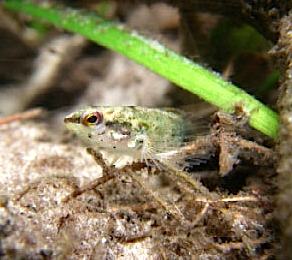 The U.S. Fish and Wildlife Service is upgrading the status of the Okaloosa darter from endangered to threatened saying that the population is being managed so well, the small fish is making major strides on its road to recovery. Much of the praise goes to a U.S. Air Force Base.
The U.S. Fish and Wildlife Service is upgrading the status of the Okaloosa darter from endangered to threatened saying that the population is being managed so well, the small fish is making major strides on its road to recovery. Much of the praise goes to a U.S. Air Force Base.
Originally listed as endangered in 1973, the Okaloosa darter is a small, perch-like fish known to occur only in six clear stream systems in Walton and Okaloosa counties in northwest Florida. About 96 percent of this watershed drainage area is under the management of Eglin Air Force Base.
Working in partnership with Fish and Wildlife Commission officials, the Eglin Air Force Base have accomplished significant recovery strides for the darter. Eglin’s natural resource managers estimate that about 95 percent of the planned erosion control projects in darter watersheds were completed. Over a period of 18 years, the base restored more than 534 acres on 356 clay pit sites that proved the primary action in achieving the downlisting.
“The US Air Force understands the vital importance of environmental conservation,” said Terry Yonkers, Assistant Secretary of the Air Force for Installations, Environment and Logistics. “We must continue not only to preserve the Okaloosa darter but to advance our efforts to preserve all wildlife that exists on our Installations.”
The decades-long effort has removed or replaced many road crossing structures and manmade impoundments to allow for fish passage and proper stream function.
Service biologists also worked with the City of Niceville to improve its wastewater collection system and install more appropriate culverts at a number of road crossings.
Using innovative sampling and monitoring techniques, U.S. Geological Survey and Loyola University New Orleans researchers provided monitoring data that were used by the Service to support reclassifying the Okaloosa darter from endangered to threatened. For the past 18 years, this research team has monitored the Okaloosa darter, and its efforts have shown that the average number of darters has almost tripled at monitoring locations. Other partners in the restoration effort include the University of West Florida, University of Florida, and Florida Department of Environmental Protection.
The final rule will be published in the Federal Register later this week. Additional details and the rule can be found at www.fws.gov/panamacity/



















